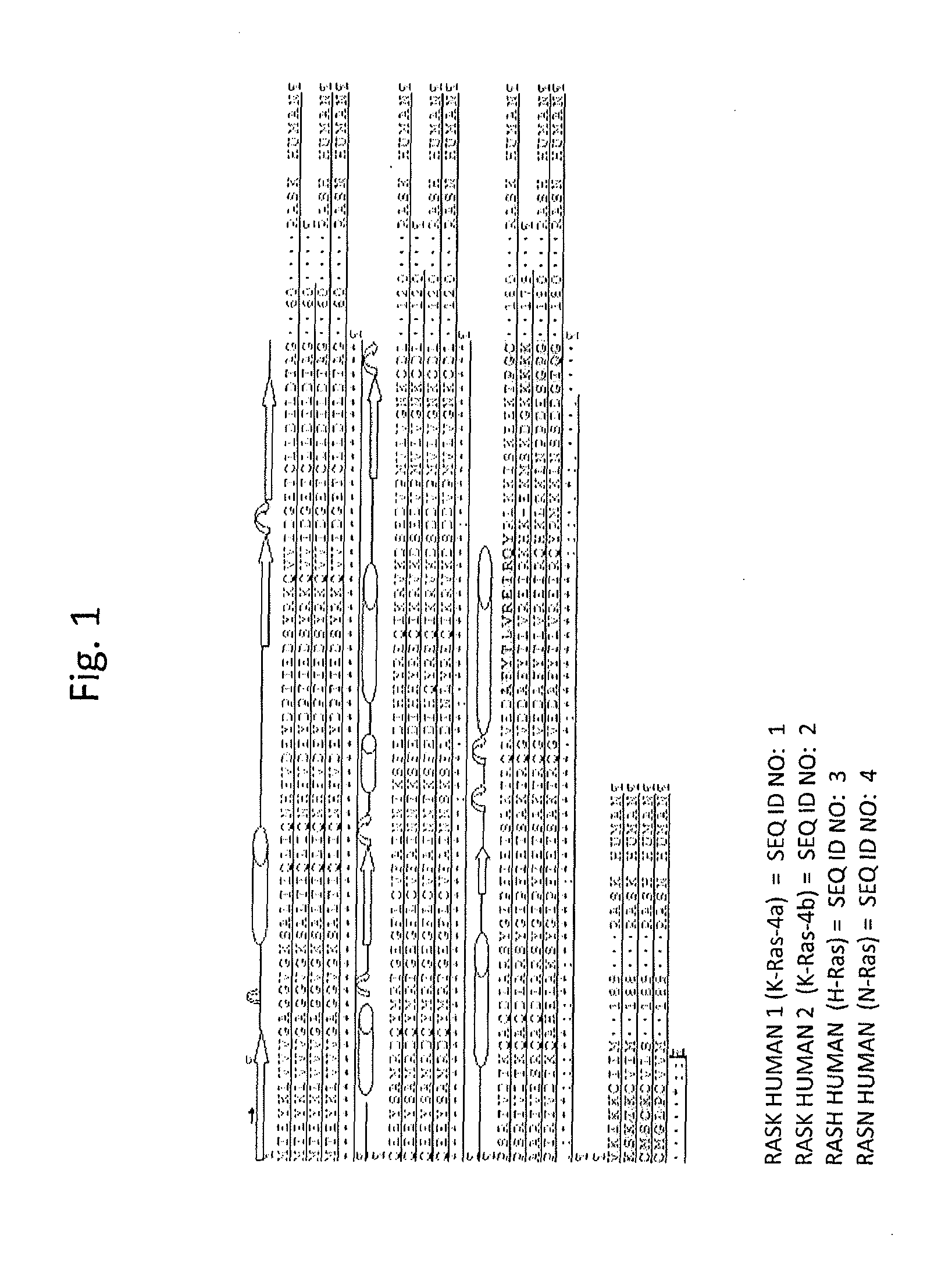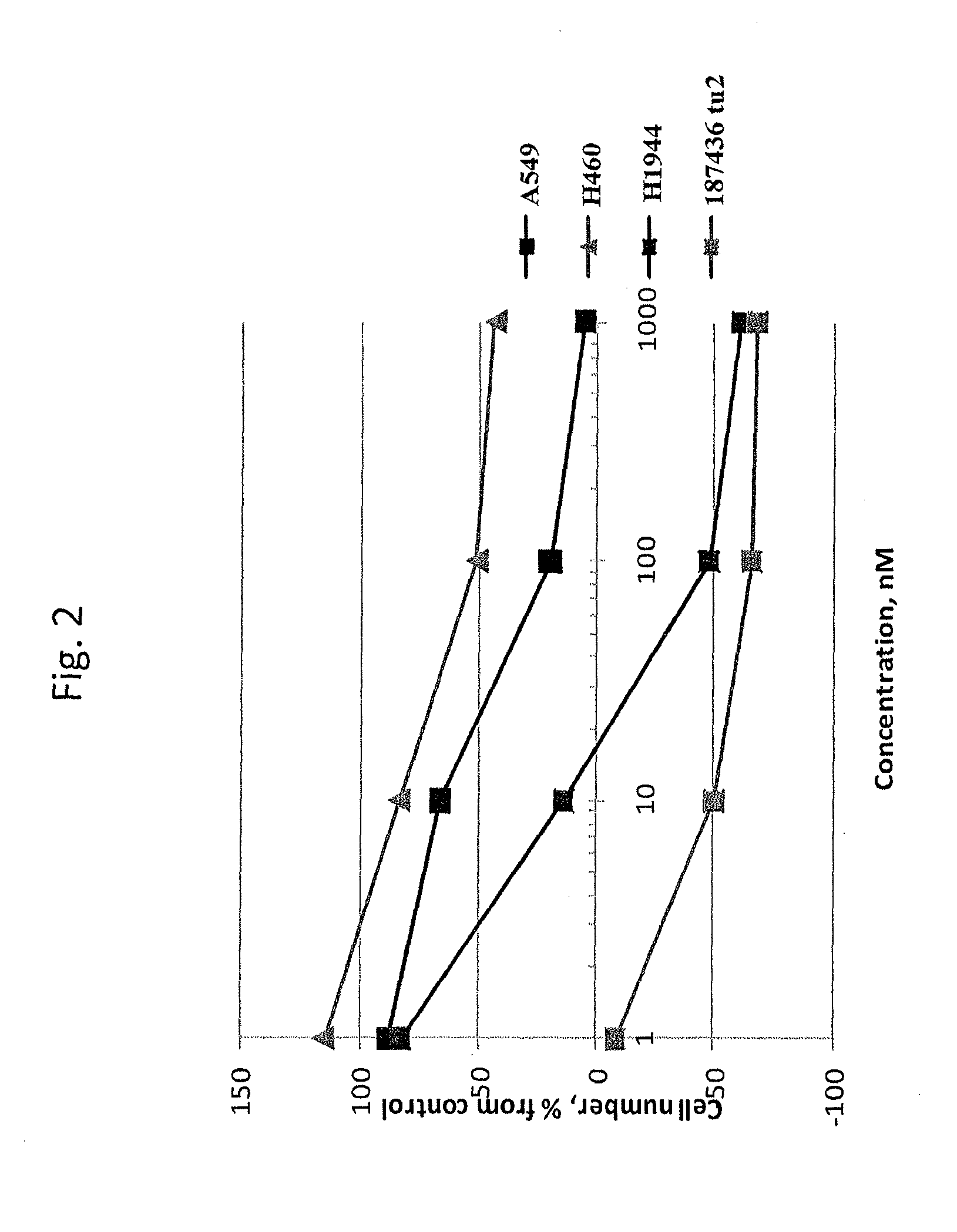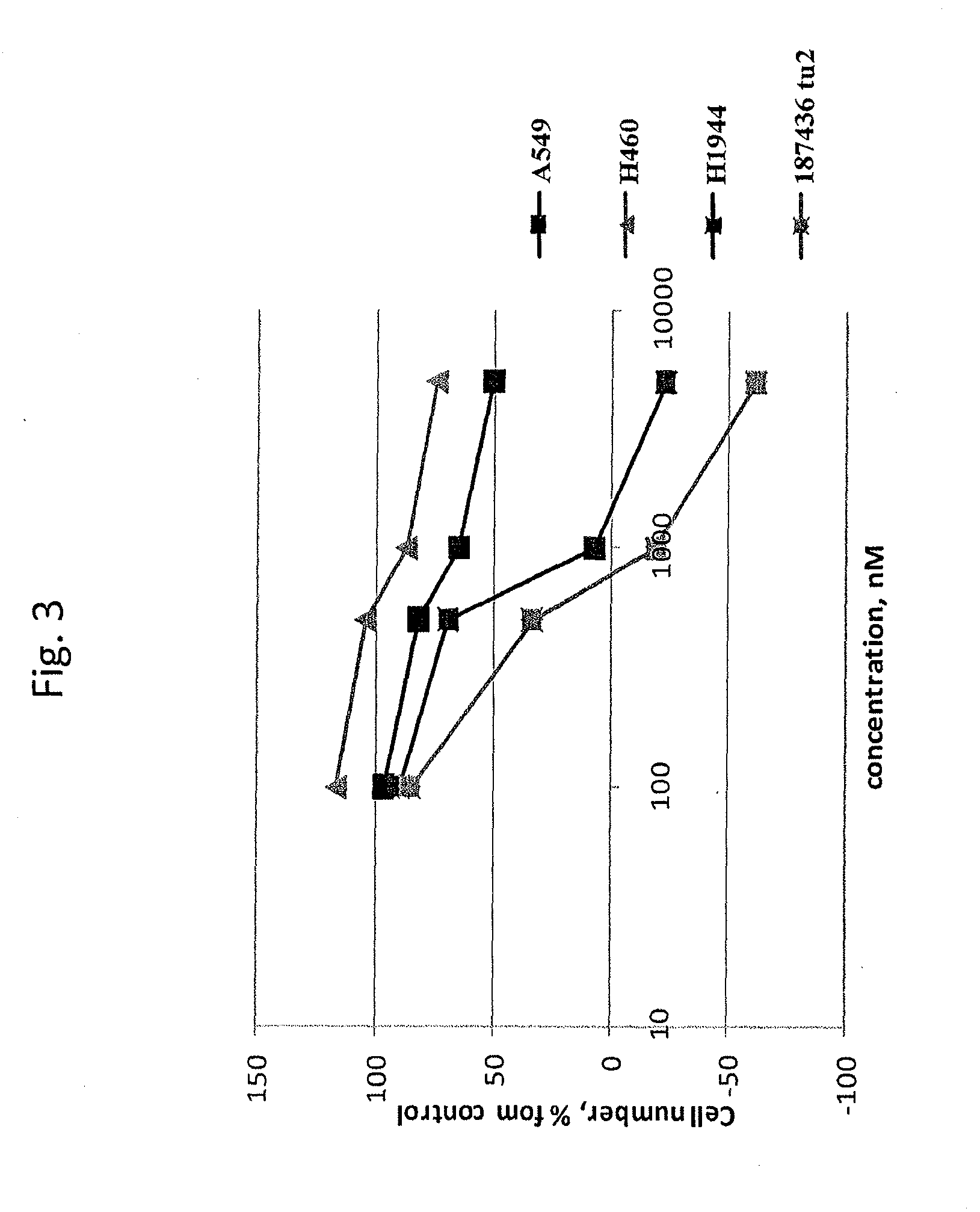Lipopeptide inhibitors of ras oncoproteins
a technology of ras oncoproteins and inhibitors, which is applied in the direction of peptide/protein ingredients, enzyme inhibitor ingredients, drug compositions, etc., can solve the problem that no inhibitors acting directly on ras oncoproteins have been developed even for in vitro us
- Summary
- Abstract
- Description
- Claims
- Application Information
AI Technical Summary
Benefits of technology
Problems solved by technology
Method used
Image
Examples
example 1
[0079]This example demonstrates the identification of analogs of the C-terminal α-helix of Ras.
[0080]The design of inhibitors was based on available x-ray structures of K-Ras and H-Ras proteins. The structures have suggested that the C-terminal α-helix of the proteins (helix 6 in K-Ras) occupies central position in the protein, is involved in multiple intramolecular interactions, and, thus, is likely to play a critical role in both structure stabilization and structural rearrangements during signaling events.
[0081]A library of synthetic peptide analogs of helix 6 was constructed. For structural stabilization of protein fragments and membrane anchoring, all peptide analogs were equipped with palmitate residues (see Table 1). The sequences of the peptides are presented in Table 1, wherein amino acid substitutions in the native sequences are in bold.
TABLE 1Structure-activity relationships in derivatives of the C-terminalα-helix of K-Ras.SEQIDCompoundNOStructureGI50, nMkR-H6-110 P...
example 2
[0085]This example demonstrates the characterization of the interaction of analogs of the C-terminal α-helix with Ras protein.
[0086]To study the interactions of the catalytic domain of K-Ras with kR-H6-6, 15N-labeled truncated K-Ras (1-166) lacking the hypervariable region was prepared as described in (Abraham et al., Protein Expression and Purification, 73(2): 125-131 (2010)). The purified protein was concentrated to 200 μM and titrated with a solution of kR-H6-6. The titration was followed by NMR 15N-edited HSQC spectra acquired on a 600 MHz Bruker spectrometer at 25° C.
[0087]Analysis of NMR titration data revealed a localized interaction of the peptide with the Switch I region of K-Ras with the most significant chemical shift perturbations found in residues Q25, N26, S32, T35, and E37. Intermolecular interactions between helix 6 of GTP-γ-S loaded K-Ras and the Switch I region of the neighboring K-Ras molecule previously were observed by x-ray crystallography. The Switch I region ...
example 3
[0088]This example demonstrates the identification of analogs of the hypervariable region (HVR) of Ras.
[0089]The HVR of Ras protein has been suggested to be involved in targeting proteins to certain regions of cellular membranes and in interactions with effector proteins. HVR of Ras protein is naturally lipidated on the C-terminal ends. To generate the mimetics of HVR, peptides palmytilated on the C-terminal ends through ε-amino group of Lys that replaced farnesylated Cys of Ras were synthesized. The sequences of the peptides are presented in Table 2.
[0090]Since there was no structural data for any HVR of Ras, extensive structure-activity studies along with comparison of equivalent sequences in all isoforms of human Ras had to be undertaken (see FIG. 1 and Table 2). K-Ras-4A and N-Ras were palmitoylated on Cys 180 and 181, respectively, and were farnesylated on Cys 186, while H-Ras was palmitoylated on Cys 181 and 184 and farnesylated on Cys 186. For mimicking the palmitoylated Cys ...
PUM
 Login to View More
Login to View More Abstract
Description
Claims
Application Information
 Login to View More
Login to View More - R&D
- Intellectual Property
- Life Sciences
- Materials
- Tech Scout
- Unparalleled Data Quality
- Higher Quality Content
- 60% Fewer Hallucinations
Browse by: Latest US Patents, China's latest patents, Technical Efficacy Thesaurus, Application Domain, Technology Topic, Popular Technical Reports.
© 2025 PatSnap. All rights reserved.Legal|Privacy policy|Modern Slavery Act Transparency Statement|Sitemap|About US| Contact US: help@patsnap.com



